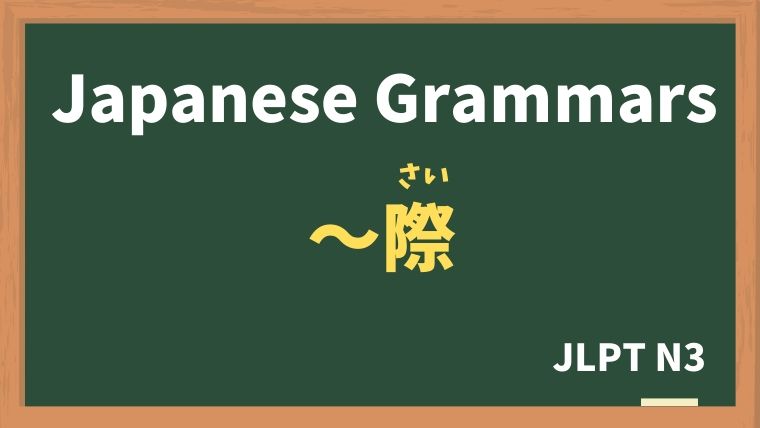
Explanation:〜際(〜さい)
fa-check-circleMeaning
"when / on the occasion of"
Compared to "〜ときに", "〜さい" is more formal.
Used to indicate a specific time or occasion when something happens. It is a formal expression often seen in written language, official contexts, or polite speech.
fa-check-circleForm
V(dictionary form) + さいに
V(ta form) + さいに
N + のさいに
fa-check-circlePoints
- Indicates a Specific Time or Occasion: "〜際" is used to specify when a particular event or action takes place.
- Formal Expression: This expression is more formal than other time expressions like "時" (とき) and is often used in official documents, business settings, or polite conversation.
fa-check-circleJLPT Level
N3
Sample sentenes
お帰りの際には、足元にご注意ください。
Please watch your step as you leave.
大阪へ来られる際には、ぜひ連絡ください。
Please do contact me when you come to Osaka.
海外へ行く際に、気をつけるべきことは何だと思いますか。
What do you think are the things you should watch out for when you go overseas?
お困りの際は、こちらの番号に電話してください。
When you are in trouble, please call this number.
契約の際は、きちんと内容を確認してから、サインをしてください。
When signing the contract, please make sure to thoroughly review the contents before signing.
お酒を購入する際は、身分証明書の提示をお願いします。
Please present your ID when you buy alcohol.
入学手続きの際に、必要書類を提出してください。
Please submit the necessary documents when enrolling.
Vocabulary
| Japanese |
English | |
| 足元にご注意ください | あしもとにごちゅういください | Please watch your step. |
| 契約 | けいやく | contract |
| 内容 | ないよう | content |
| 確認する | かくにんする | to confirm |
| 購入する | こうにゅうする | to purchase |
| 身分証明書 | みぶんしょうめいしょ | ID |
| 提示する | ていじする | to show / to present |
| 書類 | しょるい | document |
| 提出する | ていしゅつする | to submit |





